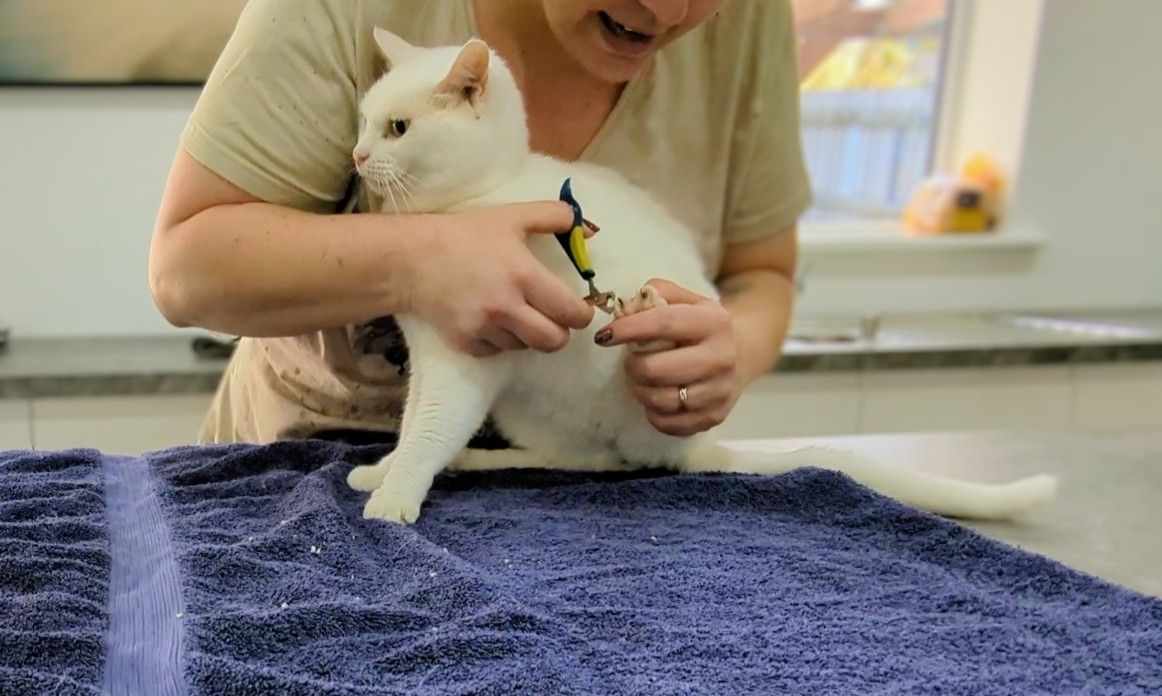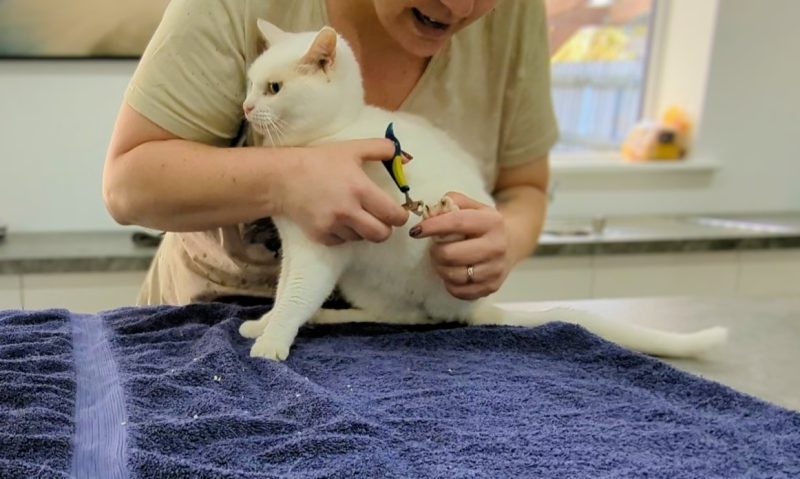Hi, I’m Dr. Karyn! Read my introduction to learn more about me and meet my five hilarious cats: Clutch, Cyril, Alex, Zelda, and Zazzles.
There’s a good chance that your cat is going to need their claws cut at some point, if not on a regular basis. If they spend a lot of time outdoors, it’s not wise to trim them too short too often, as they are an important tool for hunting, climbing, and defense. If you have an indoor kitty, keeping their claws shorter can prevent them from getting stuck in carpets and clothing, and give your furniture a fighting chance. Another reason a nail clip can be highly beneficial is if you need to do anything else that your cat is not going to enjoy, like cleaning their ears, administering medication, or giving them a bath. It might not stop them from lashing out, but it can mean the difference between a nasty slice and a superficial graze.
Some cats are really tolerant of the occasional mani/pedi, others need a bit more convincing, and there are some that are best left to the professionals. With five indoor cats, nail trims are a pretty regular occurrence at my house, so I thought I’d take the opportunity to share some pointers on how to get it right.
Set Yourself Up to Win
Preparation is the key to success, and before you grab the nail clippers, check out my article and video about how to safely restrain your cat.
Most of the time, clipping claws is a two-person job, but with a relaxed cat and the right technique, you may be able to master this chore single-handedly. Choose a quiet spot where you can safely restrain your cat on a table or on your lap, depending on how agreeable they are, and make sure you have everything you might need before you begin:
- a towel
- good quality nail clippers
- styptic powder in case of accidents
- treats for during and after the nail clip
Place a towel down on any tables so they aren’t slippery, as this will make your cat feel much more secure.
If you’re not sure if your clippers are sharp enough, trim the end of a piece of uncooked spaghetti – if it cuts smoothly and easily, you’re good to go!
Less Is More
This goes for your method of restraint, and how much to trim.
If you’ve seen my tips on restraining cats, you’ll know that I’m not the biggest fan of towel-wrapping cats, but for some, it is the only safe option. Instead, I find that using firm, confident hands placed strategically, is more likely to get you the results you want.
When it comes to trimming claws, the biggest mistake people make is to try to hold or control the limb at the paw end. The best way to immobilize the paw is by holding the elbow or ankle (tarsal joint) to stop your cat from pulling the paw away. This is much more comfortable for them and more effective for you.
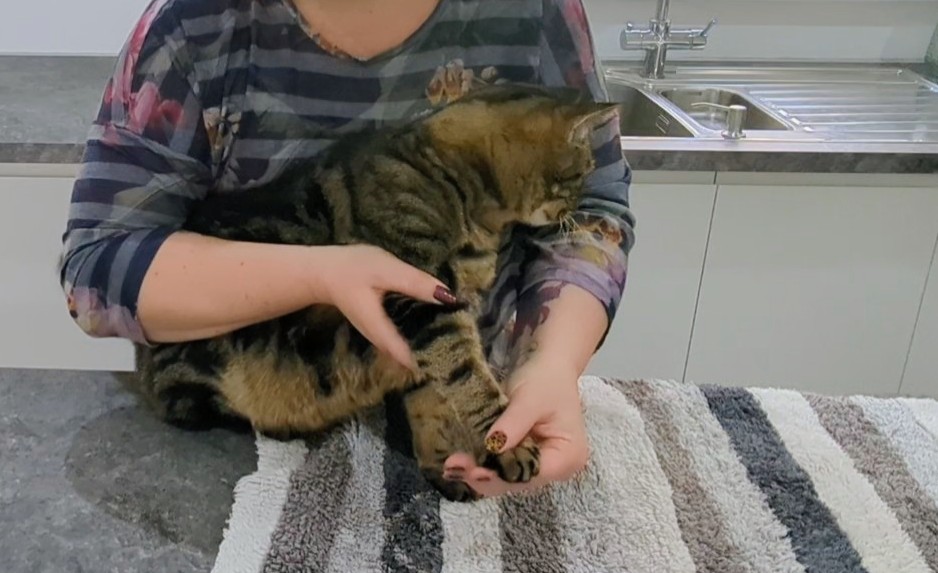
The biggest worry and risk with any nail trim is cutting the claw too short. If you’re new to this, it’s much better to play it safe and just take a couple of millimeters at a time until you get more confident. Become familiar with the anatomy of the paw and claw, and take some time to examine your cat’s feet at a time when you’re not coming at them with a pair of nail clippers!
The quick in a cat’s claw usually extends around 3-4 mm from the nail bed, but if you can’t visualize it, the safest method is to only trim the part of the claw that is very narrow and curved.
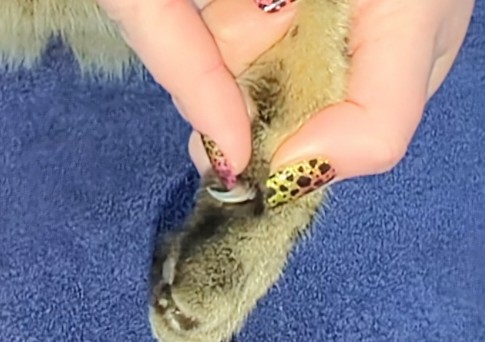
Confidence is Everything
Cats know if we’re nervous or lacking in confidence, so have faith in your abilities, or fake it until you make it! Trembling hands and hesitant movements are going to result in one anxious kitty, so prepare for the worst but plan to succeed!
Know When You’re Beaten
Even with my experience as a vet, and having many cats over the years, there are times when one of my cats, usually Zelda or Alex, will kick up such a fuss that it simply isn’t worth the anguish. It’s better to walk away as friends and try another day, than to end up scratched and distressed, with a cat that wants nothing to do with you. Some cats have a limit, and you might only manage to do one paw before they call ‘game over’. I would always prefer to do mini-claw clips more frequently than to risk traumatizing or injuring your cat or yourself.
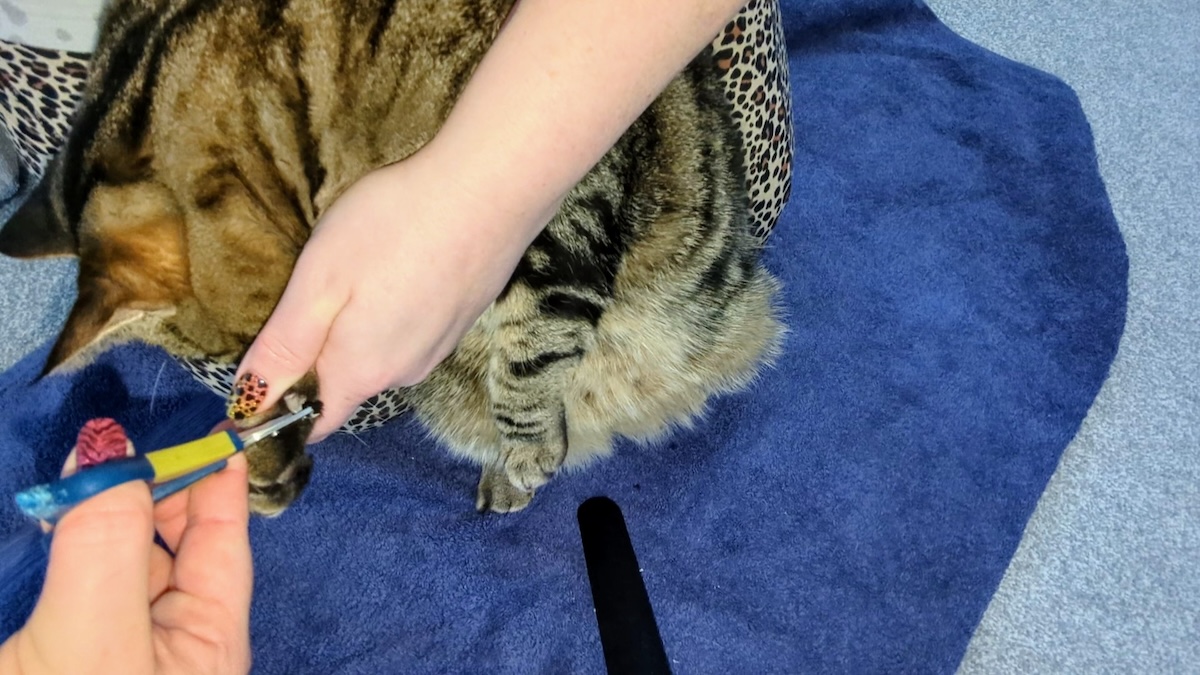
No claw clip is worth injuring you or your cat, or damaging your relationship with them, so if a home manicure just isn’t working out, don’t sweat it! Your vet or professional groomer will be able to help.
Join us next week when we tackle ear cleaning!
- Read his previous article: How to Safely Restrain a Cat: Dr. Karyn Shares Her Tips
- Read his next article: How to Give Your Cat a Bath: Dr. Karyn’s Tips (with Video)


